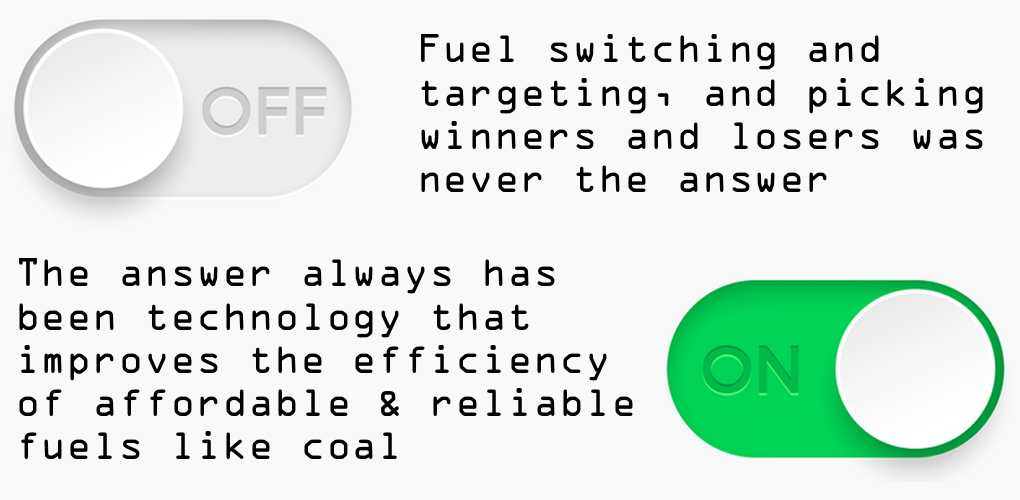
Think Innovation, Not Fuel Targeting
For the better part of a decade, U.S. emissions reduction efforts have largely consisted of fuel switching from coal to natural gas. Driven by regulatory policies that singled out coal-based electricity generation as the target, the natural gas industry seized the opportunity for a PR push to brand gas generation as “clean” power.
Despite the closure of 40 percent of the nation’s coal fleet since 2010, and a near-record closure of coal capacity last year, U.S. carbon emissions rose 3.4 percent in 2018. Putting tens-of-thousands of coal miners out of work, upending coal communities and jeopardizing affordable, reliable power has proven to be not much of a climate plan.
The research firm Rhodium found that growing electricity demand and increased natural gas generation are outpacing coal retirements. Emissions from the transportation, industrial and building sectors also rose last year.
Rhodium reported that, “natural gas not only replaced most of the lost coal generation but also fed the vast majority of the load growth last year. Natural gas-fired generation increased by 166 million kWh during the first ten months of the year. That’s three times the decline in coal generation and four times the combined growth of wind and solar.” In other words, viewed through the lens of carbon emissions, natural gas has firmly become a leading contributor to the challenge.
That’s apparently news to the oil and natural gas industry. One ad after another positions natural gas as the key emissions solution. Why debate the environmental merits of fracking when you can step on the head of the coal industry to prove your value in a carbon-constrained world?
But the simple truth of the matter is that natural gas needs carbon capture just as much as any other fossil fuel. Fuel switching – never a globally replicable strategy with coal the far more abundant and affordable option overseas – has even run out of runway in the U.S. Ask a climate hawk how they feel about the shale boom and the surge in natural gas plant additions.
Fuel switching and targeting, and picking winners and losers was never the answer, regardless of how much Mayor Bloomberg or natural gas boosters wanted it to be. The answer always has been – and remains – technology.
Electricity generation isn’t even the decisive element in the energy and emissions equation. Electricity generation produces just 25 percent of the world’s emissions. It’s the other stuff, like agriculture, transportation, manufacturing and buildings that account for the rest. Or as Bill Gates has termed it, the “75 percent problem.”
Gates, a proponent of energy innovation moon shots, believes we need breakthroughs to make a real difference. As he has written, “energy isn’t just what runs your house and your car. It’s core to nearly every part of your life: the food you eat, the clothes you wear, the home you live in, the products you use.”
Energy is the lifeblood of modern life and global energy consumption continues to grow. The global population is racing upwards towards 10 billion. The global middle class is rapidly expanding, increasing its purchasing power and increasing its carbon footprint. As Gates writes in framing just one small piece of the challenge, “the world’s building stock will double in area by 2060. That’s like adding another New York City every month for 40 years.”
Breakthrough energy technologies are beginning to emerge. The electric vehicle revolution is an example. But there will be no one silver bullet. We need replicable solutions that tackle emissions both here in the richest nation on earth and in nations still struggling to pull millions out of crippling poverty. We need energy technologies that help reduce emissions not just from the transportation and electricity sectors but from heavy industry. We need solutions that work with the fuels and energy systems the world uses and will continue to use well into the future.
- On October 9, 2019
